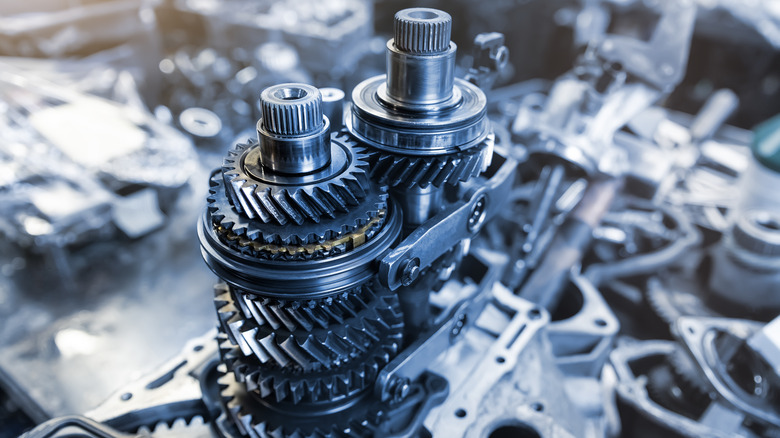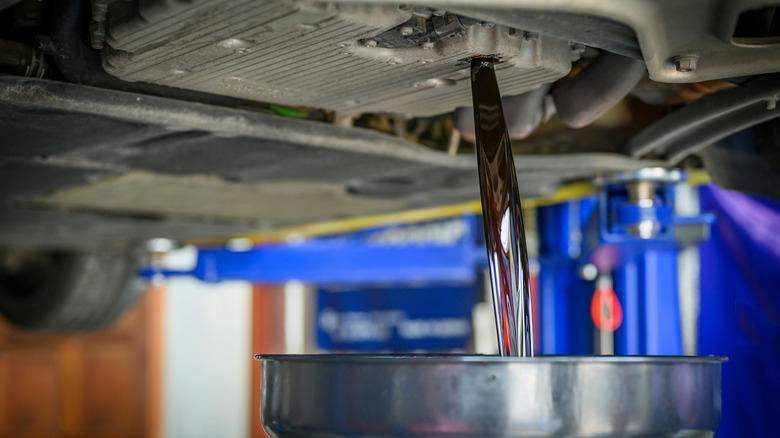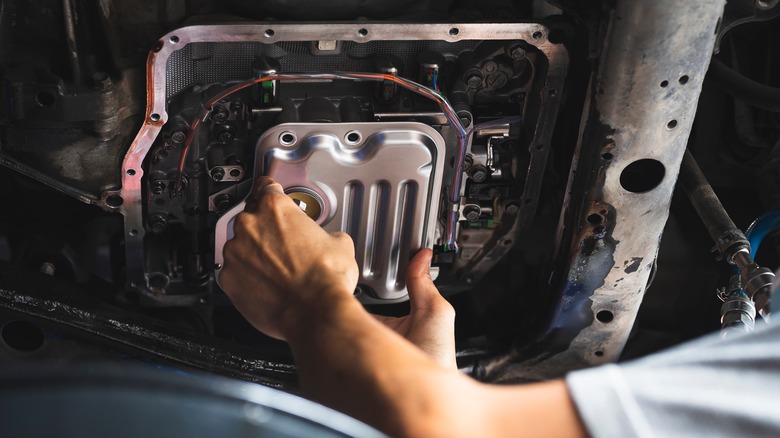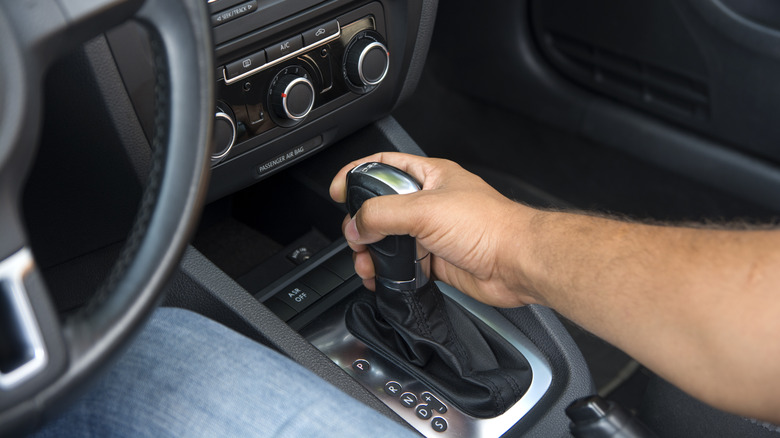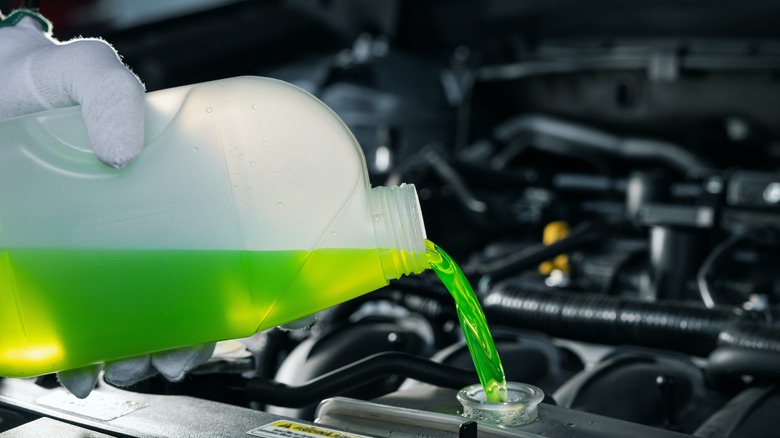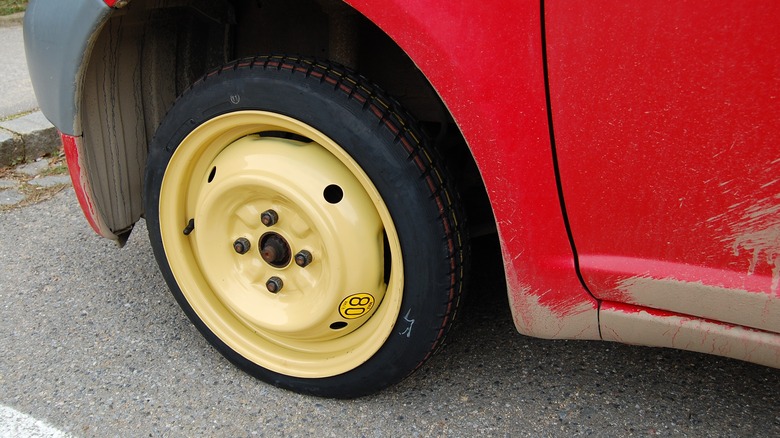5 Tips To Help Maintain An Automatic Transmission
The number of cars available with manual transmissions is dwindling with each passing year. Most electric vehicles don't even have a traditional transmission; instead, they rely on a differential with a single-gear ratio to provide energy to the wheels while keeping the engine running within its optimum power range. Most hybrids and internal combustion-powered vehicles have automatic transmissions, allowing the driver to rest their left foot and let the car's computer, torque converter, and planetary gear set to shift between gears.
While this makes for easier driving, automatic transmissions are more complex mechanically than their manual counterparts. This means additional routine care and operational attention are needed for the best performance from the complicated arrangement of gears, bearings, and clutches inside your automatic transmission. Here are five simple and important things you can do while behind the wheel and between trips to keep your automatic transmission running smoothly and help maximize its lifespan.
Check fluid levels and change the fluid regularly
Just as your engine relies on proper lubrication to run properly and last a long time, your transmission needs to have the right amount of clean fluid to perform at its best. Most vehicles have a transmission fluid dipstick near the rear of the engine, and it's best to check the fluid level when the car is on a level surface, and the engine is running with the transmission in park. Take out the dipstick, wipe it clean, put it back in all the way, take it back out again, and check the fluid level against the markings at the lower end. If it is near the "fill" line, consult your owner's manual or call the dealership's service department to identify the correct transmission fluid for your car or truck.
Some modern transmissions are advertised as "filled for life," but that doesn't mean you can ignore the fluid level or never concern yourself about changing the fluid, especially if you use your vehicle to tow a trailer. For example, the owner's manual for the 2016 Ford Super Duty 250 recommends changing the fluid if the transmission is submerged in water, and the 2017 Toyota Tundra suggests changing the fluid every 15,000 miles if the truck is used for towing.
"Filled for life," transmissions may be harder to drain and fill than ordinary transmissions. Still, if you plan on keeping your vehicle past the expiration of its warranty, you might want to have that seemingly unnecessary bit of service done anyway.
Change your filter as well
While you have your manual out or your dealer service technician on the phone, try to learn the proper interval for changing your transmission filter. Some filters need to be changed as often as every 30,000 miles, while the recommended interval for filter changes on a 2021 Ford F-150 is 150,000 miles. Just as your engine oil filter works to remove dirt, metal, and other potentially damaging particles from your oil, your transmission filter traps these contaminants and will become less effective over time.
On most vehicles, changing the transmission filter requires removing the drain pan as well, so this is a good time to replace the pan gasket to help prevent fluid leaks going forward. If you use your vehicle to launch a boat, consider upgrading to a silicone gasket like the ones made by Lube Locker or Moroso. These gaskets not only do a better job than fiber gaskets at sealing the pan, but you can usually reuse them several times before they need to be replaced.
Never shift gears while in motion
The most important thing you can do to prolong the life of your automatic transmission is to make sure you are completely stopped before changing gears. It might be tempting to try and save a few seconds while coming out of a parking spot to shift from reverse to drive while your car is still rolling slowly backward. However, this places tremendous stress on the planetary gear system and brake bands in your transmission and, if done often enough, will eventually lead to a costly repair bill.
This tip does not apply to cars when using paddle shifters like Volkswagen's Tiptronic-equipped models or the Toyota GR Supra 3.0. These systems are electronically governed, are designed to be shifted on the fly, and are meant to mimic the function of a manual transmission, allowing you to shift between gears at will.
So, if your car is equipped with one of these modern transmissions, feel free to shift gears at will, even at highway speeds (but make sure to keep an eye on your tachometer).
Keep your cooling system working properly
On most cars with automatic transmissions, the transmission fluid is circulated to dedicated passages in the radiator to be cooled, meaning your radiator, thermostat, hoses, and coolant are doing double duty if you have an automatic transmission.
In this case, it's important to make sure your radiator is always filled completely with the correct type of coolant and that your hoses, overflow tank, clamps, and caps are free from leaks. This will help ensure the system operates at the correct pressure, circulating fluid freely and keeping both your engine and transmission cool in all conditions.
If you frequently tow a heavy trailer with your vehicle, you should consider adding a transmission cooler.
This is an extra cooling device that looks like a radiator and functions the same way as the one that cools engine coolant but is dedicated to circulating and cooling your vehicle's transmission fluid. Transmission coolers are usually mounted behind your engine radiator and have dedicated lines that run to your transmission.
Don't drive too long on a small spare tire
Many cars come with a spare tire that is smaller than the original tires. This is done to save space inside the vehicle to store the spare and make it easier to change a flat tire on the side of the road, but these "donut" spares are not meant for extended use.
Most of these tires are rated for use at speeds of 50 mph and below and should be used only to drive to a tire shop to get a full-sized replacement for your damaged tire. Driving on a mismatched set of tires will cause the undersized wheel to spin faster than the other three, which puts extra stress on that axle's differential. Many front-wheel drive cars have a front differential that shares housing with the transmission, so wearing down the gears and bearings in your front axle can also spell early doom for your transmission.
If you have a front-wheel drive car and you get a flat tire on one of your front wheels and only have a small spare, it's best to put the spare on one of your rear wheels and move a full-sized rear wheel to the front. Even then, you should have the small spare replaced with a full-sized tire as soon as possible.
